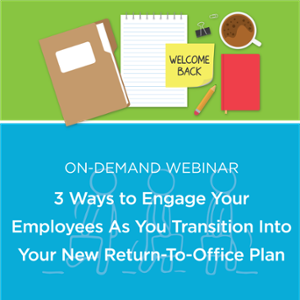
It’s hard to miss the plethora of news articles and social media posts centered around the Great Resignation –– a term born during the pandemic describing the voluntary mass exodus from the workforce in recent months.
This trend, also known as the Big Quit, is particularly prevalent among younger generations worldwide. A study from Adobe found that a staggering 59% of Generation Z survey respondents reported being dissatisfied with their jobs –– the majority of whom are planning to find a new job within the year.
Perhaps the most surprising element of the Big Quit is people are voluntarily leaving their jobs without having a new offer or job in place. According to a recent study from McKinsey, 40% of employees in the U.S. who quit in the last six months fell into that category.
Quitting has become so ubiquitous that companies all over the globe are scrambling to figure out why employees are leaving and how to retain their most talented performers before announcing another departure.
Why and Why Now
 The sudden switch to remote work in March of 2020 changed how, when, and where employees performed their jobs. Now, almost 18 months later, many people have new realizations about what they want moving forward and are reluctant to go back to their pre-pandemic ways.
The sudden switch to remote work in March of 2020 changed how, when, and where employees performed their jobs. Now, almost 18 months later, many people have new realizations about what they want moving forward and are reluctant to go back to their pre-pandemic ways.
The data supports this notion that people are no longer chasing bigger paychecks. Instead, they're looking for more meaning in their work. Responses collected in the McKinsey study from individuals who already left their jobs showed they did so because they didn’t feel valued by their boss or organization and lacked a sense of belonging at work.
However, when employers were asked why their employees were leaving, they listed compensation, work-life balance, and poor physical or emotional health as the main drivers for the exodus.
This profound disconnect between what employers think their team members want –– namely more time and money –– and what employees actually want –– to be seen, heard, and acknowledged at work –– is at the heart of the Great Resignation.
What Leaders Can Do
There are several steps leaders and organizations can take to meet the changing needs of their workforce to retain top talent and have a positive impact on their bottom line.
1. Engage Your Employees
Employees want a renewed sense of purpose in their work and a shared identify. Yes, they want pay, benefits, and perks, but more than that they want to be valued by their organizations and managers. In other words, they want to be engaged.
Researchers at Gallup found that it takes more than a 20% pay raise to lure most employees away from a manager who engages them, and next to nothing to poach the most disengaged workers.
The solution? It all starts with company culture. Specifically focusing on these four engagement elevators in organizations with in-office, fully remote, or hybrid workplaces will have the biggest impact on employee engagement.
2. Develop Your People
At the crux of the Great Resignation is a people issue, not an economic one. Employees want to be managed and treated in a way that works for them, not vice versa.
Managers who previously recruited and retained top talent with in-office perks like catered lunches and on-site gyms are now having to swap out for a new set of tools –– effective coaching and individualized development for their team members.
One of the best guidelines for managers to use when developing people is the Platinum Rule – treating others how they want to be treated. A one-size-fits-all approach runs the risk of motivating some employees, while de-motivating others. Instead, managers will need to adopt individualized coaching strategies for each team member to maximize their strengths and keep them engaged.
3. Stay Flexible
As the post-pandemic world continues to evolve, so must an organization’s policies and workplace norms. The Great Resignation is teaching us that there is not a quick transactional solution, like increase in pay, that will keep top performers engaged.
Rather, leaders need to be prepared to have a flexible approach with their employees that continues to adapt and change as the broader cultural context changes as well. One of the best ways to accomplish this, is through learning what matters most to each team member by asking them the following:
- What do they like and dislike about their jobs? This will give you insight into ways you can motivate them.
- How do they like to be coached and supported by their manager? We probably don't ask these questions very often, but if you do, it will help you, as a manager, get the most out of your salespeople.
- What are their goals and what do they want to achieve? Is it economic? Career? Promotions? What gets them excited to work?
- What motivates them? Money? Recognition? Prizes and games?
Conclusion
Retaining the top talent is worth the investment. Flexibility, along with strong people development and employee engagement, is key to creating a professional environment where your superstars not only plan to stay, but consistently perform at their potential.











Leave a Comment